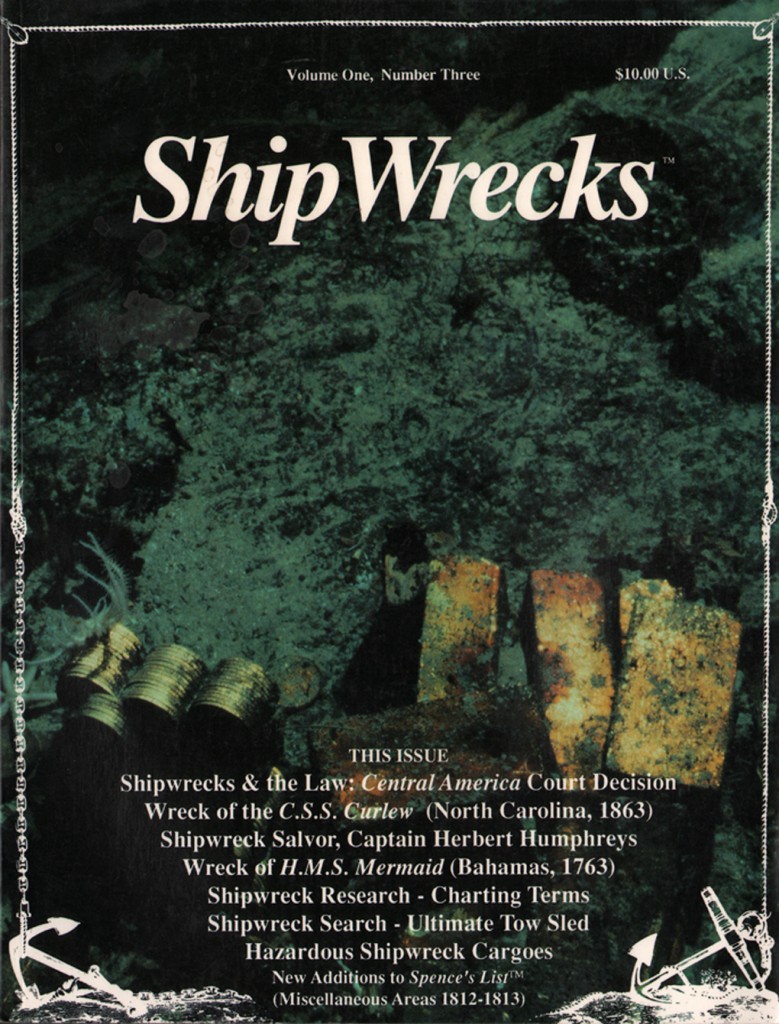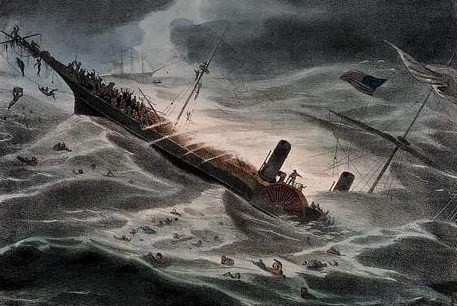
Gold of the Central America
The sinking side-wheel steamer Central America of South Carolina in a hurricane in 1857 was one of the worst shipping disasters of the Gold Rush era. Hundreds of people were lost, many of them dying with the treasure they had dug out of the California gold fields. Her cargo also included major gold shipments for various banks, making her one of the richest shipwrecks ever discovered.
Even though tons of gold bullion in bars, nuggets, dust and rare gold coins, possibly worth over a billion dollars, are still thought to be on the wreck of the Central America, the last time anyone was on it was over 20 years ago. That salvage was done by the Columbus America Discovery Group, headed by Tommy Thompson, at a cost of 22 million dollars. The salvaged gold was conservatively valued at over $40,000,000 while other reports placed the value at many times that amount. Now a report filed with Franklin County Common Pleas Court indicates the salvage could resume next summer.

Underwater photo of gold coins and bullion on the steamer Central America
ShipWrecks™ magazine cover, Volume One, #3, published by Shipwreck Press in 1994.
Thompson had used some of Dr. E. Lee Spence’s original research in contemporary newspapers, insurance reports, ships’ logs and government documents to locate the wreck. Spence had been the first to advance the theory that the wreck lay in thousands of feet of water off South Carolina instead of in just hundreds of feet of water off Cape Hatteras, North Carolina as other experts and historians had incorrectly thought. Instead of suing for a share, as so many others did, Spence congratulated Thompson and later gave hours of sworn testimony regarding the history of the ship, the confidential and proprietary nature of research and information relating to salvage techniques, the historical reasoning behind generous salvage awards, etc. in support of Thompson’s company’s defense against a consortium of insurers who claimed they were the rightful owners of the recovered treasure. The salvors were eventually awarded over 90% of the recovered treasure.
Because of his ongoing legal problems, Thompson will have nothing to do with the new effort. Instead, the work will be directed by Ira O. Kane, a court-appointed receiver for Thompson’s defunct partnership. Kane’s plans are rightfully ambitious.
Kane has contracted with Blue Water Recoveries Ltd. in the UK, and has hired Craig Mullen, a former Navy diver who lives in Key Largo and has previously directed deep-sea recovery efforts, including recovery of parts of the space shuttle Challenger. Kane has also wisely retained Robert D. Evans, who was Tommy Thompson’s chief scientist.
The report filed with the court gives a timeline that includes finding new investors by early 2014 and beginning actual salvage of the remaining gold by October, 2014. However, Kane is still undecided as to whether his group should salvage the wreck or simply sell the rights to it to someone else.
Share